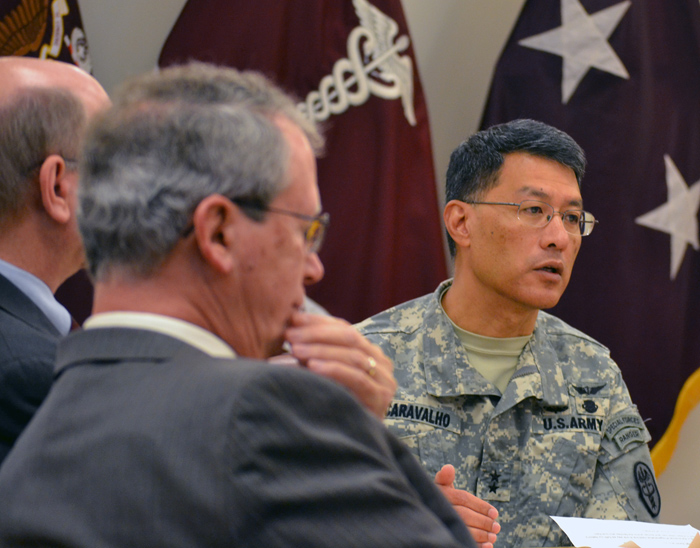AFIRM II Kick Off Gathers Army, Academic Regenerative Medicine Experts

The U.S. Army Medical Research and Materiel Command leadership hosted a kick off meeting at Fort Detrick for the Armed Forces Institute of Regenerative Medicine: Warrior Restoration Consortium, known as AFIRM II, Dec. 16.
AFIRM II is led by the Wake Forest University School of Medicine (Wake Forest Baptist Medical Center) and funded through a cooperative agreement with USAMRMC, the Office of Naval Research, the Air Force Medical Service, the Office of Research and Development - Department of Veterans Affairs, the National Institutes of Health, and the Office of the Assistant Secretary of Defense for Health Affairs.
"Patriotism doesn't come with a uniform. I believe we are all patriots here, with a single laser focus of helping our wounded warriors," said USAMRMC and Fort Detrick Commander Maj. Gen. Joseph Caravalho Jr., at the kick off meeting.
The AFIRM II program is intended to continue the success of the original AFIRM program, which was first funded in 2008. AFIRM focused on limb repair, craniofacial repair, burn repair, scarless wound repair, and compartment syndrome. The AFIRM program emphasized getting projects through advanced development, so that the innovations could be used for patients who need them. During the first program, more than 180 patients received treatment with AFIRM-funded technologies. The first AFIRM also achieved the first double hand transplant in the U.S.
"Everyone had a sense of wow of what was created during AFIRM," said Dr. Kenneth Bertram, USAMRMC's Principal Assistant for Acquisition. "Also, the exciting thing about what we do is that, generally, whatever we create for the warfighter can also help the American people, which is a great return on the investment."
Dr. Anthony Atala, head of the Wake Forest Consortium, provided an overview of the 60 projects that will be completed in AFIRM II in five key areas, including extremity regeneration; craniomaxillofacial regeneration; skin regeneration; composite tissue allotransplantation and immunomodulation; and genitourinary/lower abdomen reconstruction.
The goals of the program are to fund basic through translational regenerative medicine research, and to bring promising technologies and restorative practices into human clinical trials.
Added USAMRMC's Principal Assistant for Research and Technology Dr. Frasier Glenn, "The bottom line is that we need to be able to fully restore our injured service members so they can either continue their military careers or go on to have long, successful civilian lives."
Learn more about AFIRM II online at http://www.afirm.mil.














